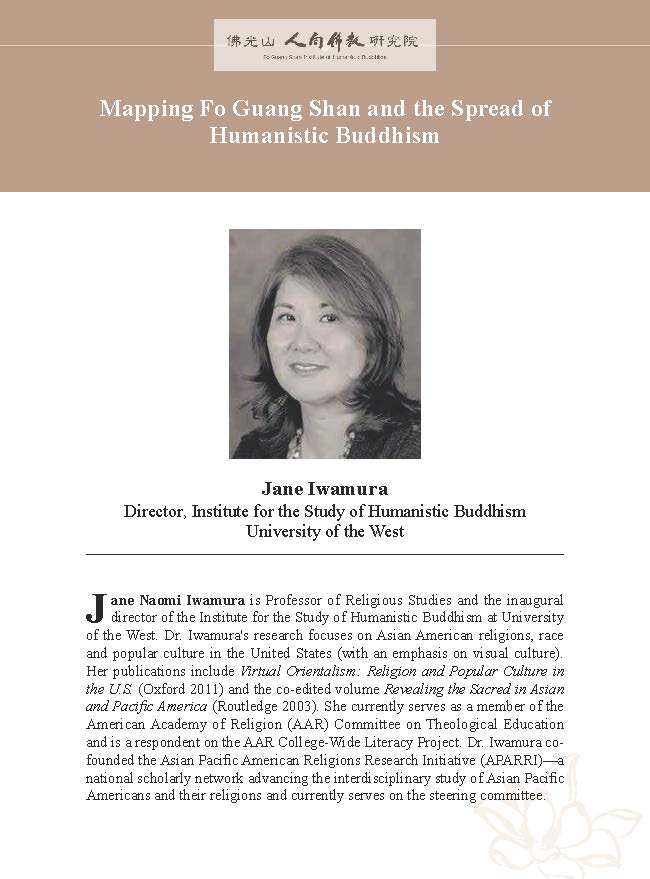
|
Mapping Fo Guang Shan and the Spread of Humanistic Buddhism
作者
Jane Naomi Iwamura
單位職稱
Director, Institute for the Study of Humanistic Buddhism, University of the West
編者
妙凡、程恭讓總編輯
關鍵字
摘要
With over 250 temples throughout the world, Fo Guang Shan (FGS) has emerged as a global Buddhist movement and significant force in the spread of Humanistic Buddhism. In this talk, I will demo an interactive map of FGS temples (existing and retired) developed by the project team at the Institute for the Study of Humanistic Buddhism at the University of the West. The map is constructed using QGIS technology and includes basic information for each temple (name, address, GPS coordinates) and a sliding timeline by which the user can view the historical spread of FGS temples across the world. QGIS allows for additional layers in which the user can also develop their own components (e.g., Taiwan’s population and GDP growth) and visually analyze the relationship of other data to the base map. As such, the interface provides scholars with a powerful research tool and significant starting point that can be used to investigate the geo-social dimensions of Buddhist institutions and understand the factors that have contributed to the growth of Humanistic Buddhism.
引文
Jane Naomi Iwamura, " Mapping Fo Guang Shan and the Spread of Humanistic Buddhism, " 2019人間佛教高峰論壇──人間佛教與未來學 (2020): 272-277
全文下載











